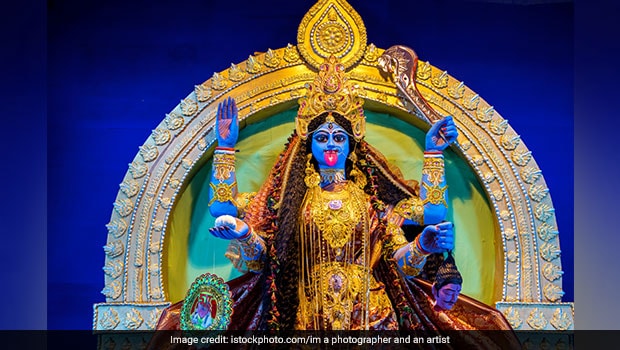[ad_1]
The weather is currently at its best, with a sudden nip in the air bringing respite from months of humidity. Alongside this change, a string of festivals has put everyone in a celebratory mood. Kali Puja is just around the corner, and devotees are busy preparing to make the festival a grand affair. This festival is predominantly celebrated in the eastern regions of India, especially in West Bengal, and coincides with Diwali. Historians believe that the first large-scale Kali Puja was introduced in the 18th century by Raja Krishnachandra of Krishnanagar, West Bengal. Since then, Bengalis worldwide have celebrated this festival annually on the Amavasya (Dipannita Amavasya) of the Hindu month Kartika. Simply put, Kali Puja falls on the day of Diwali or a day before Chhoti Diwali, depending on the tithi.
Kali Puja 2023: Shyama Puja Date This Year
This year, Kali Puja coincides with Diwali, falling on November 12, 2023 (Sunday).
Kali Puja Nishita Time: 11:39 pm to 12:32 am, November 13
Amavasya Tithi Begins: 02:44 pm on November 12, 2023
Amavasya Tithi Ends: 02:56 pm on November 13, 2023
(Source: drikpanchang.com)
Kali Puja 2023 Celebration: Components Of A Bhog Thali
Traditionally, devotees observe nirjala vrat on this day, offering puja to Goddess Kali throughout the night with ritualistic rites and mantras. Alongside, they prepare bhog, offer it to the Goddess, and later break the fast with Prasad. Now, the question arises, what goes into a traditional bhog thali? While khichuri (Bengali khichdi), chorchori (mixed vegetables), luchi (Bengali puri), and five types of bhaja (fried vegetables) remain constant, the mithai offered varies based on personal preferences. Here, we have curated a list of classic Bengali sweets that you can prepare at home for the Kali Puja offering. Take a look.

Kali Puja 2023 Bhog: 5 Traditional Bengali Sweets (Mishti) For The Bhog Thali:
1. Payesh:
Payesh is a Bengali-style kheer made with rice, milk, sugar/jaggery, and dry fruits, including cashew nuts and raisins. Payesh has a thicker consistency compared to kheer, and it includes gobindobhog rice for added flavour. Ghee is also used in the recipe to enhance the dish’s aroma. Click here for the recipe.
2. Sooji:
In Bengal, sooji ka halwa is referred to as sooji. The recipe remains similar, but the halwa is solidified to the point where it can be cut into barfi shapes and offered as cake slices. Sooji is usually paired with luchi (puri) when offered as bhog. Click here to learn how to make sooji.
3. Narkel Naru:
Narkel Naru is similar to coconut laddoo, made with freshly grated coconut, sugar/jaggery, milk, cardamom powder, and water. Naru is hard and solid from the outside and has a soft inner side. The ones made with jaggery can also be sticky. When cut into diamonds, the same preparation is referred to as takti. This crunchy delight always forms a part of every festive celebration in Bengal. Click here for a classic narkel naru recipe.
4. Sandesh:
Sandesh is possibly the easiest recipe in the lot. All you need are chenna (paneer), khoya, cardamom, some dry fruits, and sugar or jaggery. Patience and skill will help you make sandesh like a pro. You can experiment with the ingredients to give classic sandesh various new forms. Here’s the quintessential sandesh recipe for you.
5. Rosogolla:
No celebration in Bengal is complete without rosogolla. In fact, the dish and the culture of Bengal go hand-in-hand. Here’s a recipe that can help you make delicious and juicy rosogolla at home. Click here to know more.
With these popular Bengali mithai recipes at your disposal, we suggest preparing them at home and offering them to the Goddess on the occasion of Kali Puja 2023.
[ad_2]
Source link
